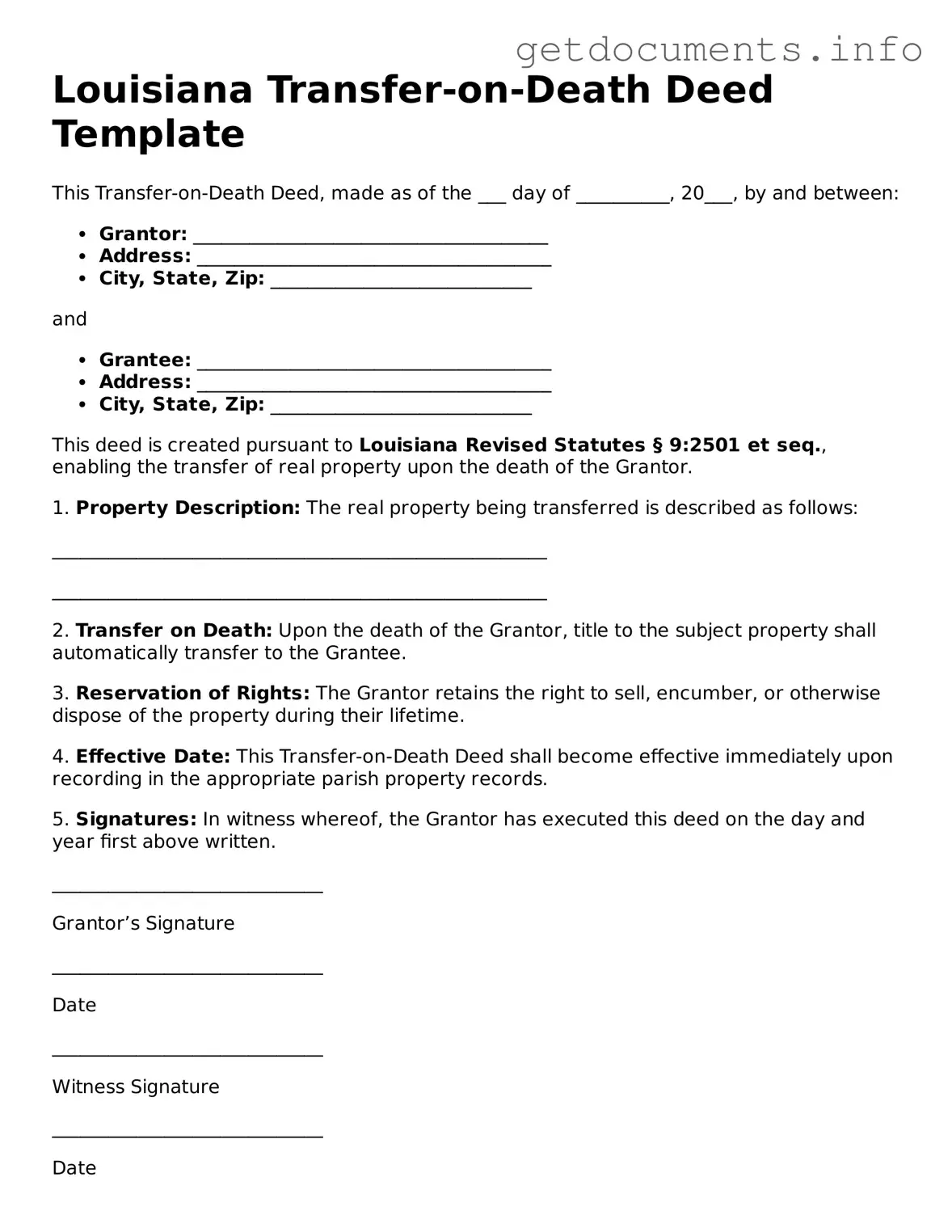In Louisiana, planning for the future often involves making important decisions about how your property will be handled after your passing. One effective tool for this purpose is the Transfer-on-Death Deed form, a legal document that allows property owners to designate beneficiaries who will automatically receive their property upon their death, bypassing the lengthy probate process. This form not only provides peace of mind but also simplifies the transfer of real estate, ensuring that your loved ones inherit your property without unnecessary delays or complications. It is crucial to understand the specific requirements for completing this deed, including who can serve as a beneficiary and the implications of revoking or modifying the deed. Additionally, knowing the difference between a Transfer-on-Death Deed and other estate planning tools, such as wills or trusts, can help you make informed decisions that align with your overall estate strategy. As you navigate this important aspect of property management, being well-informed will empower you to take the necessary steps to secure your legacy and protect your family's future.
